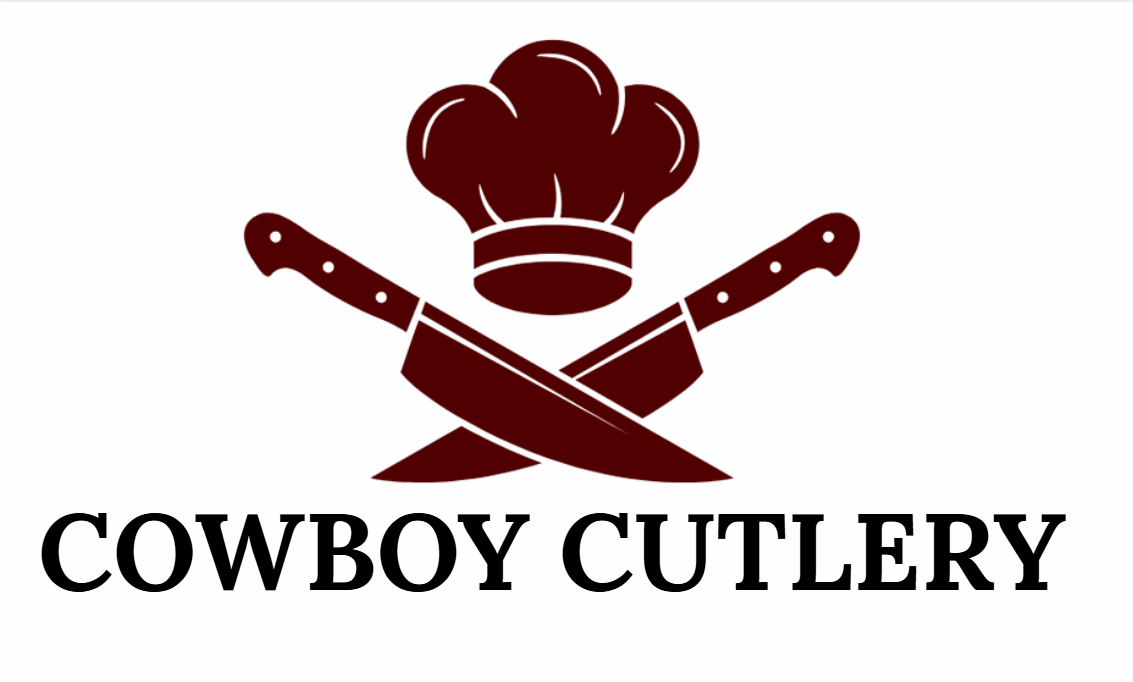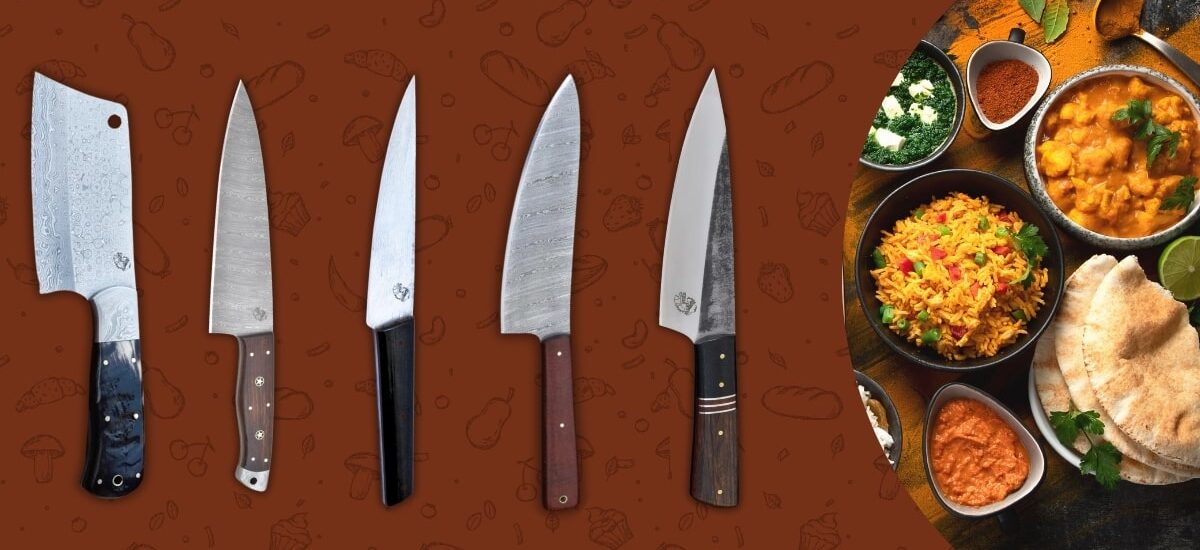A person entering the kitchen can experience pure joy with an appropriate cutting knife but struggle with frustration without it. Making decisions about which kitchen knives to buy becomes challenging because there exist numerous types available in the market. The Cowboy Cutlery team presents essential information without additional useless content so you can understand clearly.
We need to explore the diverse knife collection to identify which tools should stay in your kitchen drawing area.
1. Chef’s Knife: The All-Rounder
The choice becomes clear when deciding between knives because the chef knife stands above all others as the perfect tool for kitchen usage.
This multi-purpose blade effectively cuts through both meat pieces and vegetable pieces.
Key Features:
Blade length: Typically 8 inches
Curved edge for rocking motion
Strong and versatile
A chef knife that fulfills its purpose properly saves you time spent on your kitchen tasks. The quality chef’s knife from Cowboy Cutlery will establish itself as your ultimate kitchen companion while completing tasks ranging from onion dicing to roast carving.
2. Paring Knife: The Precision Expert
The task demands delicate work which makes the paring knife an essential tool.
This tool helps with tasks like peeling apples as well as deveining shrimp or trimming small fruits and vegetables.
Key Features:
Small and lightweight (about 3–4 inches)
Sharp point for control
Ideal for intricate cuts
You don’t need to wrestle a giant blade to peel a potato. A paring knife lets you work quickly and precisely.
3. Serrated Knife: The Bread Boss
The struggle to cut bread can absolutely end up leaving you with destroyed bread. You needed a serrated knife.
The specialized saw-like blade cuts through outer hardness and inner softness found in bread along with tomatoes and citrus fruits and other slippery objects.
Key Features:
Teeth-like edge
Long blade (usually 8–10 inches)
Effortless sawing motion
Your fresh bread and juicy tomato cutting routine requires the serrated cutting knife to succeed.
4. Utility Knife: The Middle Child
Between the chef knife and paring knife stands the utility knife which occupies a sizeable position between the two. The serrated design enables this knife to handle sandwiches while trimming meat fat and provides easy cutting of smaller vegetables.
Key Features:
Blade length: 4–7 inches
Straight or slightly curved edge
Great for everyday tasks
The utility knife acts as your main instrument after you need something smaller than a chef knife.
5. Boning Knife: The Meat Specialist
Those who plan to prepare fish and meat dishes should consider getting a boning knife.
Budget cutleries create this tool because it excels at clearing bones and joints from meat with sharp accuracy.
Key Features:
Thin, flexible blade
Narrow tip for tight spaces
This tool serves as an excellent instrument for chicken deboning and fish filleting.
Cowboy Cutlery produces boning knives designed to turn difficult cutting tasks into breeze.
6. Cleaver: The Powerhouse
A cleaver stands out beyond its butcher roots because it serves home cooks just as effectively.
The blade has enough power to handle strong tasks including meat splitting and bone cutting as well as garlic crushing.
Key Features:
Heavy, rectangular blade
Delivers powerful chops
Great for large cuts of meat
Prepare large roasts and rib meats with a cleaver since this tool should belong in every home kitchen.
How Many Knives Are Required?
The number of knives required for normal usage remains uncertain.
A kitchen setup requires no more than three essential knives. The initial three components are sufficient for basic kitchen needs when you start cooking:
Chef’s knife
Paring knife
Serrated knife
More experience in cooking will make you consider getting a utility knife together with a boning knife followed by a cleaver. The most economical approach is to purchase several premium knives instead of acquiring a vast yet inexpensive knife set which remains unused.
The Cowboy Cutlery team wants to offer knives which will transform into usable tools instead of wasting space with worthless accessories.
Tips for Choosing the Right Cutting Knife
A few essential considerations exist during kitchen knife purchasing:
An ideal knife demonstrates equilibrium by easily resting naturally in your grasp.
Different individuals tend to select either heavier knives or prefer lightweight knives as their choice.
You should check the comfort aspects of how the handle fits. The handle needs to provide safe grip rather than generating slippery sensations.
The durability of cutting tools benefits from high-carbon stainless steel or Damascus steel material which maintains its sharpness for extended periods.
The levels of knife maintenance differ depending on which tool you select.
A proper selection of cutting knife depends on personal preference combined with premium materials instead of numerous options.
Final Thoughts
To excel in kitchen cutting knife types you only require several essential tools to achieve professional results in your cooking process.
First acquire three essential knives including a chef’s knife alongside a paring knife and a serrated knife to start with.
At Cowboy Cutlery, customers can select reliable knives that achieve peak performance as well as enduring durability.
Your culinary experience will become faster and safer while becoming more enjoyable through the selection of proper quality knives.
You are ready to enhance your kitchen performance?
Great cutting companions await you at Cowboy Cutlery so browse their chosen collection of excellent kitchen knives alongside essential sets to find your perfect fit.


